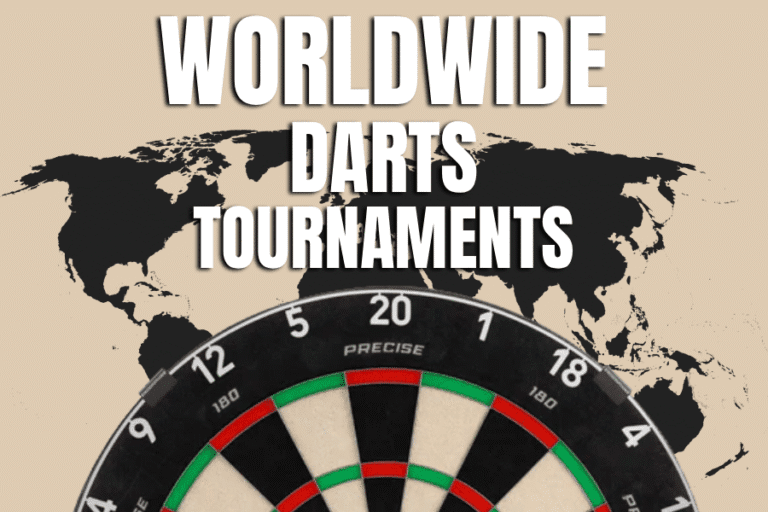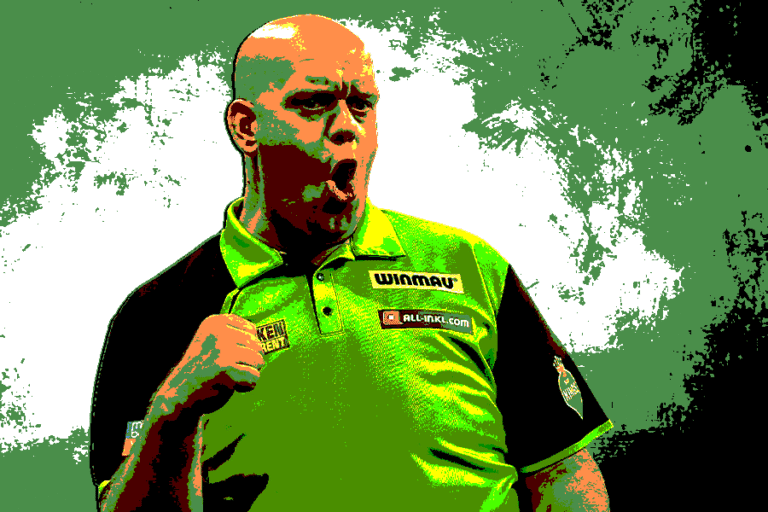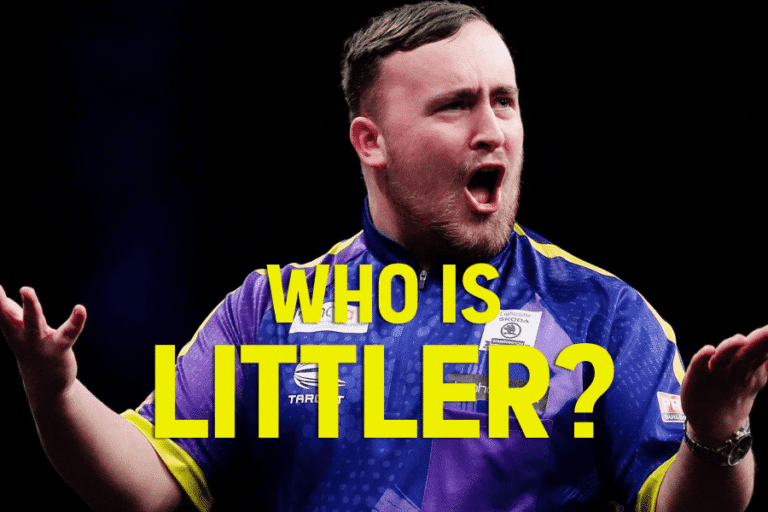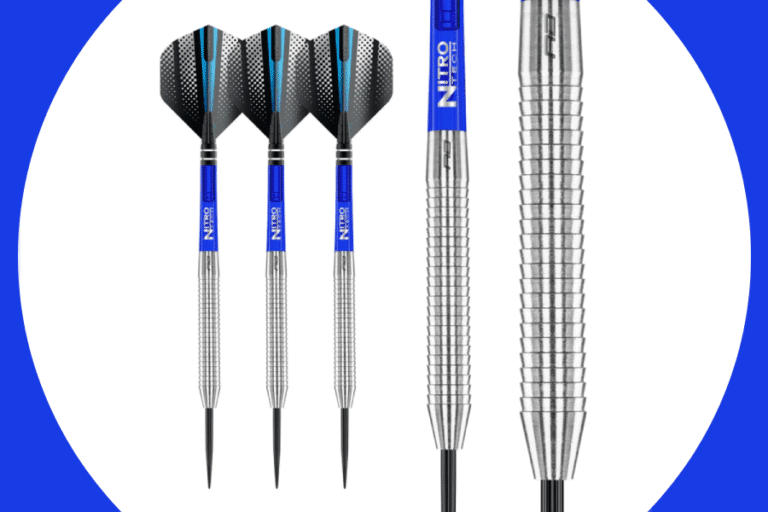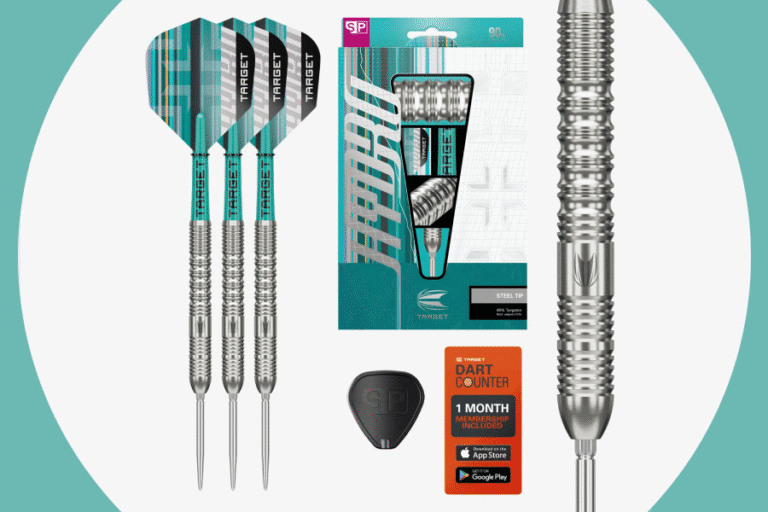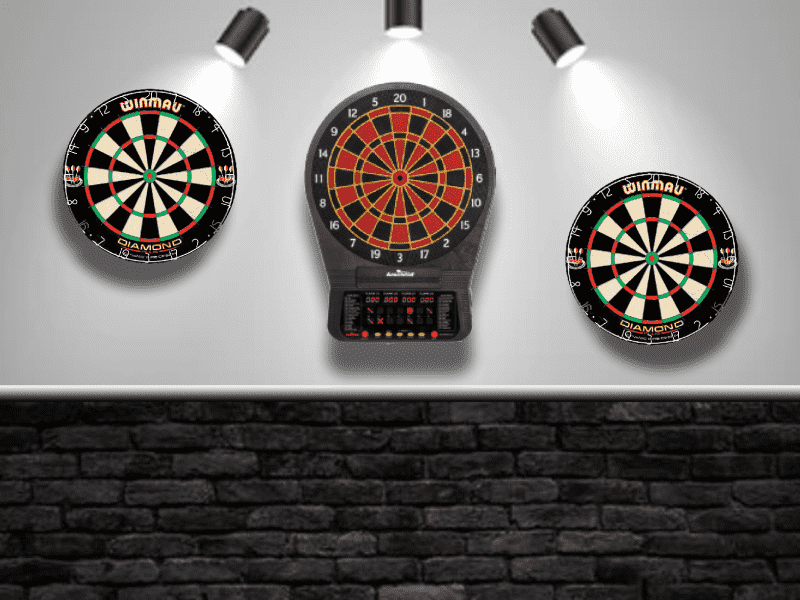
Darts has long been celebrated for its precision, strategy, and strong community spirit. It’s a game that people of all ages, abilities, and backgrounds can enjoy. Recently, efforts to make darts more inclusive have gained momentum, especially for individuals who use wheelchairs.
As disability darts continue to evolve, it highlights the importance of accessibility and fairness. The game’s adaptations, from adjusting dartboard heights to modifying throw line rules, reflect a commitment to equal opportunity for all players.
By examining these changes and the growing support within the community, we gain insight into how darts is becoming a sport that truly welcomes everyone.
Accessibility in Disability Darts: Ensuring Everyone Can Play
Adapting Traditional Setups for Inclusivity
Disability darts focuses on making the sport accessible to everyone, regardless of physical ability. This involves crucial adjustments to traditional setups and rules. For example, the dartboard height and throw line or oche are modified for wheelchair users.
These adaptations help level the playing field, allowing players—whether standing or seated—to compete fairly.
Transitioning to an inclusive setup involves several key changes. For instance, standard dartboard heights are adjusted to ensure that all players can aim accurately. Similarly, modifications to the oche allow wheelchair users to throw darts comfortably.
These changes are not merely about accessibility but also about maintaining the integrity of the sport. By making these adjustments, darts becomes a game where everyone can compete on an equal footing.
Providing Support and Resources
Accessibility also means offering support and resources tailored to players with disabilities. Various organizations worldwide are dedicated to promoting inclusivity in darts. They provide tournaments, training sessions, and social opportunities, helping foster a sense of belonging among players.
Support extends beyond just physical adaptations. It includes creating venues that cater to wheelchair users and providing necessary resources for players. These efforts ensure that individuals with disabilities can fully engage in the sport, both socially and competitively.
The growing network of supportive organizations helps integrate disability darts into the broader darts community.
Qualification and Assessment in Disability Darts
Criteria for Inclusion: Ensuring Fair Competition
To ensure fair competition in disability darts, players must meet specific qualifications and undergo assessments.
The World Disability Darts Association (WDDA) has established clear criteria for participation in its events. Eligible players must have a clinically diagnosed impairment, such as impaired muscle power, limb deficiency, or ataxia.
These criteria are crucial for maintaining the sport’s competitive integrity. Assessments ensure that players are categorized accurately, allowing for fair play. For example, players with impaired muscle power might have reduced strength in one limb, while those with limb deficiency might have partial or total absence of bones.
Accurate assessment ensures that all participants can compete on an equal level.
Types of Impairments and Their Impact
Understanding the impact of different impairments helps in creating a fair playing field. Impairments such as hypertonia or athetosis can affect a player’s ability to perform specific movements.
The assessment process takes these factors into account, ensuring that the game remains competitive for all.
For instance, players with ataxia, characterized by lack of muscle coordination, may require specific adaptations to their equipment or playing style.
By recognizing and addressing these needs, the sport ensures that everyone has the opportunity to compete effectively.
Disability Darts for the Blind: A New Horizon in Inclusive Sports
Darts for the blind is revolutionizing inclusive sports, enabling visually impaired individuals to enjoy the game.
This adaptation keeps the core of traditional darts but adds features like audible signals on dartboards to help players judge their aim. Raised, tactile markings also guide players in targeting.
These modifications make darts accessible, offering a fulfilling experience for blind players.

Enhanced Equipment for Better Play
Innovative equipment, such as sound-equipped darts, provides immediate feedback by alerting players when they hit the target.
Tailored coaching techniques focus on auditory cues and spatial awareness. These advancements make darts more inclusive, fostering skill development and a supportive community for blind players.
Wheelchair Dartboard Adaptations and Height Adjustments
Modifying Dartboard Height for Wheelchair Users
One of the most significant adaptations in disability darts is the modification of the dartboard height. Standard dartboards are typically set with the bullseye at 173 cm (5 feet 8 inches) from the floor.
However, this height can be challenging for wheelchair users. To address this, major darts organizations recommend a reduced height of 137 cm (4 feet 6 inches) for wheelchair players.
This adjustment ensures that the bullseye is at an appropriate level for seated players. By aligning the dartboard with the height needs of wheelchair users, the sport maintains its precision and fairness.
Players can aim and throw darts with the same accuracy as their standing counterparts, making the game more inclusive.
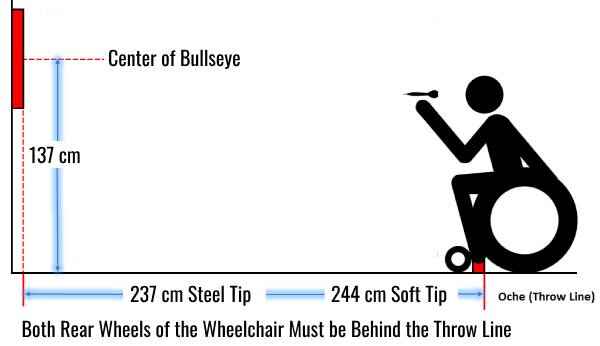
Ensuring Fairness and Precision
Height adjustments are not just about accessibility; they are about maintaining fairness in the game. By ensuring that the dartboard is at an appropriate height for all players, the sport upholds its integrity.
This adaptation allows wheelchair users to compete with the same level of precision as standing players.
Such changes are essential in making sure that everyone can participate equally. They reflect the sport’s commitment to inclusivity and fairness, ensuring that all players have the opportunity to excel in darts.
Throw Line (Oche) Rules for Wheelchair Players
Adjusting the Oche for Seated Players
The throw line, or oche, is another critical area where rules are adapted for wheelchair players. Traditionally, players stand behind a line marked 237 cm (7 feet 9.25 inches) from the dartboard.
For wheelchair users, this rule is modified to allow their front wheels to be positioned over the oche while their rear wheels remain behind it.
This adjustment is crucial for accommodating different body positions in a seated position. By allowing wheelchair users to position their chairs appropriately, the sport ensures that players can throw comfortably and effectively.
This modification helps remove physical constraints and enables players to focus on their game.
Accommodating Different Body Positions
The adapted oche rules address the unique needs of wheelchair users. By considering the different body positions and providing a fair way for wheelchair players to throw, the sport maintains its competitive nature.
These adjustments ensure that everyone can participate without physical limitations affecting their performance.
Such changes demonstrate the sport’s dedication to inclusivity and fairness. By accommodating various body positions, darts becomes a game where all players can compete on equal terms.
Space Considerations for Wheelchair Darts
Creating Accessible Environments
Creating an accessible environment for wheelchair darts involves careful planning of the space around the dartboard. Wheelchair users need ample room to maneuver their chairs, approach the line, and retrieve their darts.
An ideal setup provides enough space for players to move back and forth without encountering obstacles.
Space considerations are not just about practicality; they are about creating a welcoming environment. Ensuring that the playing area is accessible and free of obstructions helps wheelchair players focus on their game.
This approach enhances their overall experience and enjoyment of the sport.
Designing Welcoming Playing Areas
An accessible playing area allows wheelchair players to engage in the game without feeling restricted. By designing venues with sufficient space and accessibility in mind, the sport becomes more inclusive.
Players can concentrate on their performance rather than dealing with physical limitations.
Creating such environments is essential for promoting inclusivity in darts. It ensures that all players, regardless of their physical abilities, can enjoy the game to its fullest.
Disability Darts Competitions: National, Local, and Online Opportunities
Opportunities for Competitive Play
Disability darts offers numerous competition opportunities, ranging from national and local tournaments to online leagues. These events provide players with various platforms to test their skills and showcase their talents.
National and local tournaments specifically organized for players with disabilities create avenues for competitive play.
These competitions are vital for fostering talent and encouraging participation. They offer a chance for players to engage with the sport on a competitive level, further integrating disability darts into the broader darts community.

The Rise of Online Competitions
Online competitions have become increasingly popular, especially following the COVID-19 pandemic. Virtual tournaments and online leagues allow players to compete from home, overcoming geographical barriers.
This rise in online play has expanded opportunities for participation and connected players from around the world.
Online platforms provide valuable opportunities for players who may have limited access to local events. They offer a way to compete and connect with a global community, making the sport more accessible than ever before.
Disability Darts Associations and Support Groups
Key Organizations Supporting Disability Darts
Several organizations are dedicated to supporting and promoting disability darts. The World Disability Darts Association (WDDA) plays a leading role in advocating for inclusivity and organizing events for players with disabilities.
The British Disability Darts Association (BDDA) and the World ParaDarts organization also contribute to the growth of the sport.
These organizations work to establish rules and standards that accommodate the needs of wheelchair players. Their efforts help integrate disability darts into the wider darts community and promote equal opportunities for all participants.

Online Communities and Support Networks
Online communities provide valuable support for wheelchair darts players. Social media groups and forums offer spaces for players to connect, share experiences, and find information about events.
These platforms foster a sense of belonging and provide a network of support for players worldwide.
Online communities play a crucial role in bringing together players from different regions. They offer a way to stay connected and engaged with the sport, further supporting the growth of disability darts.
The Culture of Disability Darts: Building Community and Camaraderie
Fostering a Supportive Community
The culture of disability darts is built on a foundation of community and camaraderie. Players often face unique challenges in their daily lives, and disability darts offers a space to connect with others who share similar experiences. This sense of belonging is a key aspect of the sport.
The supportive environment extends beyond the game itself. Players form lasting friendships and connections through local clubs, national tournaments, and online communities.
This camaraderie enriches their experience and contributes to a positive and inclusive culture.

Social Benefits Beyond the Game
The social aspect of disability darts is just as important as the competitive side. Many players find that the friendships and support they gain through the sport are invaluable.
The sense of community provides emotional and social benefits that enhance their overall quality of life.
Disability darts offers a platform for players to connect, support each other, and celebrate their shared love of the game. This strong sense of community helps make the sport a meaningful and enriching experience for all involved.
Looking Ahead: The Future of Disability Darts
Increasing Awareness and Inclusivity
The future of disability darts is bright, with increasing efforts to promote awareness and inclusivity. Media coverage, sponsorship, and community engagement are crucial for expanding opportunities and reaching a wider audience.
By highlighting the achievements and contributions of players with disabilities, the sport continues to grow.
Ongoing innovations in equipment, rules, and competition formats further support the expansion of disability darts.
These advancements ensure that the sport remains accessible and enjoyable for all players, regardless of their physical abilities.
Innovations and Expansions
The sport is expected to benefit from continuous innovations, including improvements in dartboard design, throwing techniques, and online competition formats.
These innovations aim to enhance the playing experience and accommodate the evolving needs of players with disabilities.
As disability darts evolves, it will continue to offer new opportunities and experiences for players. The commitment to inclusivity and fairness will drive the sport’s growth, ensuring that everyone can participate and excel.
Conclusion: Celebrating the Inclusivity of Disability Darts
Disability darts exemplifies the spirit of inclusivity and demonstrates that the game can be enjoyed by everyone, regardless of physical abilities.
The sport’s adaptations and supportive community reflect a commitment to ensuring that all players have the opportunity to compete and thrive.
As disability darts continues to evolve, it reinforces the message that darts is a sport for all, where everyone can find joy and success.
Frequently Asked Questions
What are disability darts?
Answer: Disability darts is an inclusive version of traditional darts designed to accommodate players with physical impairments. It involves adjustments to equipment and rules to ensure fair competition for all players.
How is the dartboard adjusted for wheelchair users?
Answer: For wheelchair users, the dartboard height is often adjusted to 137 cm (4 feet 6 inches) from the floor to ensure accessibility and accuracy.
What changes are made to the throw line for wheelchair players?
Answer: The throw line, or oche, is modified to allow wheelchair users to position their front wheels over the line while keeping their rear wheels behind it.
How are players with disabilities assessed for competition?
Answer: Players are assessed based on their physical impairments, such as impaired muscle power or limb deficiency, to ensure fair play and appropriate categorization.
Are there national and local tournaments for disability darts?
Answer: Yes, disability darts features national and local tournaments, as well as online competitions, providing various platforms for players to compete.
What organizations support disability darts?
Answer: Key organizations include the World Disability Darts Association (WDDA), the British Disability Darts Association (BDDA), and the World ParaDarts organization.
How do online communities support disability darts players?
Answer: Online communities provide spaces for players to connect, share experiences, and find information about events, fostering a supportive network.
What is the role of the oche in wheelchair darts?
Answer: The oche is adjusted to accommodate wheelchair players, allowing them to throw darts comfortably while ensuring fair competition.
How does disability darts benefit players socially?
Answer: Disability darts fosters a sense of community and camaraderie, offering social benefits and connections beyond the competitive aspect of the sport.
What innovations are expected in disability darts?
Answer: Future innovations may include improvements in dartboard design, throwing techniques, and online competition formats, enhancing the playing experience and inclusivity.

